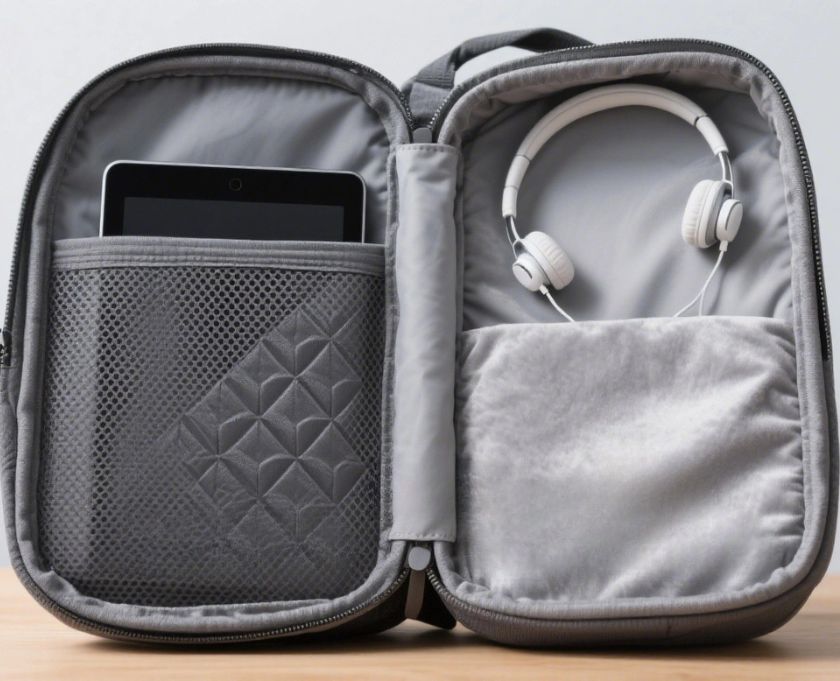Beautiful Plants For Your Interior

In 2025, backpack buyers are paying closer attention not just to outer fabrics, but also to lining materials. The backpack lining materials and comfort connection plays a huge role in durability, sweat control, and all-day wearability.
What Is a Backpack Lining?
Functional Role of Linings
Backpack linings provide support, protection for gear, and user comfort.
Comfort vs. Durability Balance
A good lining must strike a balance between being breathable and strong.
Common Types of Backpack Lining Materials
Mesh Lining
- Breathable, reduces sweat buildup.
- Common in hiking and sports backpacks.
Nylon Lining
- Smooth, durable, and resistant to tears.
- Often paired with waterproof coatings.
Polyester Lining
- Affordable, lightweight, and quick-drying.
- Popular in student and casual backpacks.
Foam-Padded and Memory Foam Linings
- Provide cushioning and ergonomic support.
- Great for business and travel backpacks.
How Backpack Linings Influence Comfort
Breathability and Sweat Control
Mesh and perforated foams allow airflow.
Cushioning for Long Wear
Foam linings reduce pressure on shoulders and back.
Temperature Regulation
Breathable fabrics help prevent overheating.
Weight Distribution and Ergonomics
High-quality linings ensure proper support for heavy loads.
Pros and Cons of Each Lining Type
| Lining Material | Pros | Cons |
|---|---|---|
| Mesh | Breathable, lightweight | Less durable under heavy loads |
| Nylon | Strong, water-resistant | Less breathable |
| Polyester | Affordable, quick-drying | Moderate durability |
| Foam-Padded | Excellent comfort and support | Adds weight, less breathable |
Best Backpack Linings for Different Uses
School and Daily Commuting
Polyester or nylon linings for affordability and practicality.
Hiking and Outdoor Adventures
Mesh or nylon for breathability and durability.
Business and Travel Backpacks
Foam-padded linings for comfort on long trips.
Top 8 Backpacks with Comfortable Linings in 2025
- Osprey Atmos AG — Anti-gravity mesh comfort system
- Deuter Aircontact Lite — Ventilated lining for hiking
- The North Face Borealis — Hybrid nylon and mesh lining
- Samsonite Tectonic Lifestyle — Professional with padded lining
- Mark Ryden Comfort Series — Urban style with memory foam lining
- Patagonia Arbor Mesh Comfort — Eco-friendly + breathable
- Thule Subterra Comfort Edition — Rugged business travel comfort
- Herschel Tech Lined Backpack — Stylish, padded interior lining
Comparison Table: Backpack Lining Materials
| Use Case | Recommended Lining Type | Comfort Level | Durability |
|---|---|---|---|
| Students | Polyester/Nylon | Medium | Medium |
| Hikers | Mesh/Nylon | High | High |
| Business Travel | Foam-Padded/Nylon | Very High | High |
| Casual Use | Polyester | Medium | Medium |
Maintenance Tips for Backpack Linings
- Wipe down with mild soap and damp cloth.
- Air-dry thoroughly to prevent mildew.
- Avoid overloading to reduce strain on lining.
- Reapply protective sprays if water-resistant.
Common Mistakes When Choosing Backpack Linings
- Choosing aesthetics over comfort
- Ignoring sweat and heat management
- Forgetting laptop and device protection
- Overlooking cleaning ease
Frequently Asked Questions (FAQs)
Q1: Which lining is best for hot climates?
A: Mesh or perforated foam for airflow.
Q2: Are foam-padded linings too heavy?
A: Slightly heavier, but excellent for long trips.
Q3: Do linings affect waterproofing?
A: Yes—nylon and polyester linings enhance water resistance.
Q4: How long do backpack linings last?
A: 5–7 years with proper care.
Q5: Can I wash a backpack lining?
A: Spot clean only; avoid full machine washing.
Conclusion: Finding the Right Lining for Maximum Comfort
The backpack lining materials and comfort relationship is key to making the right choice in 2025. Mesh offers breathability, nylon provides strength, polyester balances cost and convenience, while foam padding delivers unmatched comfort.